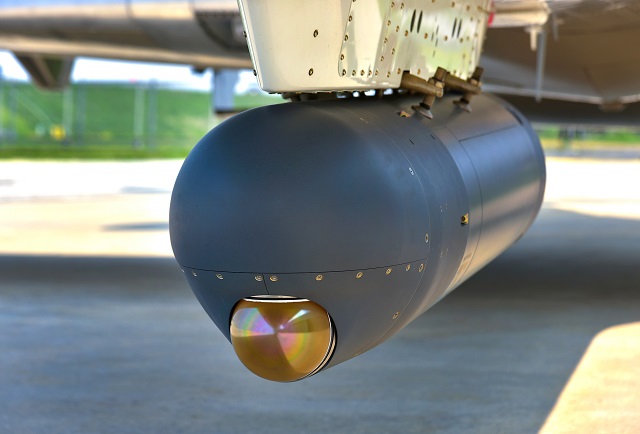Lockheed Martin has flight tested its new Legion Pod infrared search-and-track system for the first time on its F-16 Fighting Falcon in Fort Worth, Texas, as the US Air Force explores upgrades to make its legacy fighters more competitive against modern airborne threats.
The pod carries the Lockheed IRST21 sensor, which traces its lineage back to the Grumman F-14 Tomcat and is now in operation on the Boeing F/A-18 Super Hornet and international F-15 platforms.
Legion Pod is aimed at a USAF programme to provide the F-15C Eagle with a passive, long-range infrared sensor capability, and the service is also exploring options for its Lockheed F-16s.
“Legion Pod was integrated on to the F-16 without making any hardware or software changes to the aircraft,” Lockheed said in a 30 June statement. “Additional flight tests on the F-16 and F-15C will continue throughout the year.”

Lockheed Martin
Paul Lemmo, vice-president of fire control at Lockheed Martin Missiles and Fire Control, describes the Legion Pod, which was unveiled by the company in February, as a “production-ready, multi-sensor system” derived from hardware that is already in production with an established logistics tail.
The first Legion Pod flight follows Northrop Grumman’s announcement in June that it had partnered with Selex ES to offer a podded IRST system called OpenPod to the air force.
OpenPod is also in flight testing and will be available on the domestic and international market, according to James Mocarski, Northrop’s vice-president of airborne tactical sensors. “Our offering would be available to any upcoming competitions, but this is the first,” he said on 2 June.
The air force has a renewed interest in IRST systems, since its legacy fighters will remain in service for far longer than originally planned and need survivability upgrades. IRST allows an aircraft to detect the heat signature of airborne threats without having to use radar.

Northrop Grumman
Source: FlightGlobal.com



















